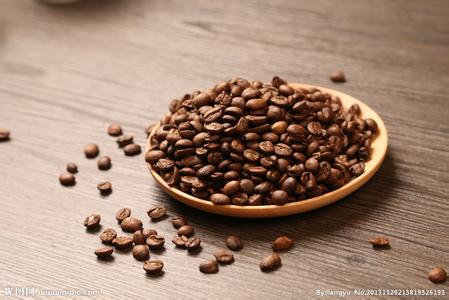Which is the best taste and flavor characteristics of Brazilian yellow bourbon coffee beans?
Which is the best taste and flavor characteristics of Brazilian yellow bourbon coffee beans?
Bourbon species, native to Bourbon Island in the Indian Ocean (now known as Reunion Island), is the second species caused by Typica mutation. It belongs to the oldest existing coffee variety. The green fruit appears bright red when ripe, while the yellow bourbon species is derived from the cross between bourbon species and other varieties. Because of its low yield and relatively intolerant to wind and rain, it has not been widely planted. However, when planted at high altitude, it will have excellent flavor performance, which is more common in recent years.
Brazil Syrador Yellow Bourbon (Brazil Cerrado Yellow Bourbon): the three major boutique coffee producing areas in Brazil are Syrador, South Minas and Mojiana in the central and western part of Minas province. Brazil's Yellow Bourbon is located in the Hirado region of Brazil. However, not all coffee produced in the prairie of Syracuse can bear the name of Syrador. It is only on the plateau of 1100 to 1300 meters above sea level in the central and western part of Minas province that sweet, mellow and fishy coffee can be obtained from the high altitude and fertile soil.
Properly treated sun beans are rich in flavor and sweeter, but the sun is easy to have miscellaneous beans, so it is not easy to distinguish between unripe beans. When we choose beans, we usually pick and taste a small amount of beans before a large batch, and then bake and taste a small amount of beans in large quantities, before and after the cup test to determine whether the beans are of the same level.
Coffee was first introduced to Brazil in the early 18th century. In 1727, the Brazilian government sent a personable army officer to secretly bring coffee seeds from French Gaiana to Brazil on the pretext of mediating border disputes. It is said that the governor's wife of French Gayana was so fascinated by the officer that she secretly brought coffee tree seeds to him at a farewell dinner party. At present, 2 million hectares of land in Brazil is used to grow coffee, and the largest is Arabica. These beans will eventually be sent to large bakers in various countries, also known as Santos (in the name of the port of export santos, not the producing area).

Important Notice :
前街咖啡 FrontStreet Coffee has moved to new addredd:
FrontStreet Coffee Address: 315,Donghua East Road,GuangZhou
Tel:020 38364473
- Prev

Raminita Manor Farm boutique Coffee Costa Tarazu
La Minita Farm boutique coffee Costa Rica Tarazu Costa Rica produces only a small amount of coffee, with an annual output of about 110000 tons, ranking seventh in Central and South America. Costa Rica is dominated by recent coffee varieties, such as Kaddura, Kaduai, New World, etc., while the ancient bourbon and Tibica are rare. There are also many varieties in China, the most famous of which is the bourbon variety Vera Saatchi, which belongs to the wind.
- Next

Which is the best taste and flavor characteristics of Brazilian yellow bourbon coffee beans?
Brazilian yellow bourbon coffee bean taste characteristics which kind of good bourbon species, native to the Indian Ocean Bourbon Island (now known as Reunion Island), is the second species of Typica mutation, and Ironka belong to the oldest existing coffee varieties, the green fruit will show bright red when ripe, while the yellow bourbon species is derived from the cross between bourbon species and other varieties. Because of its low yield and relatively intolerant.
Related
- Detailed explanation of Jadeite planting Land in Panamanian Jadeite Manor introduction to the grading system of Jadeite competitive bidding, Red bid, Green bid and Rose Summer
- Story of Coffee planting in Brenka region of Costa Rica Stonehenge Manor anaerobic heavy honey treatment of flavor mouth
- What's on the barrel of Blue Mountain Coffee beans?
- Can American coffee also pull flowers? How to use hot American style to pull out a good-looking pattern?
- Can you make a cold extract with coffee beans? What is the right proportion for cold-extracted coffee formula?
- Indonesian PWN Gold Mandrine Coffee Origin Features Flavor How to Chong? Mandolin coffee is American.
- A brief introduction to the flavor characteristics of Brazilian yellow bourbon coffee beans
- What is the effect of different water quality on the flavor of cold-extracted coffee? What kind of water is best for brewing coffee?
- Why do you think of Rose Summer whenever you mention Panamanian coffee?
- Introduction to the characteristics of authentic blue mountain coffee bean producing areas? What is the CIB Coffee Authority in Jamaica?

